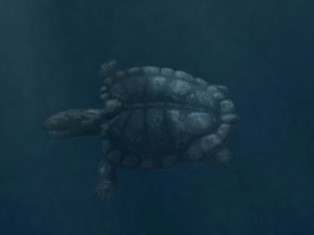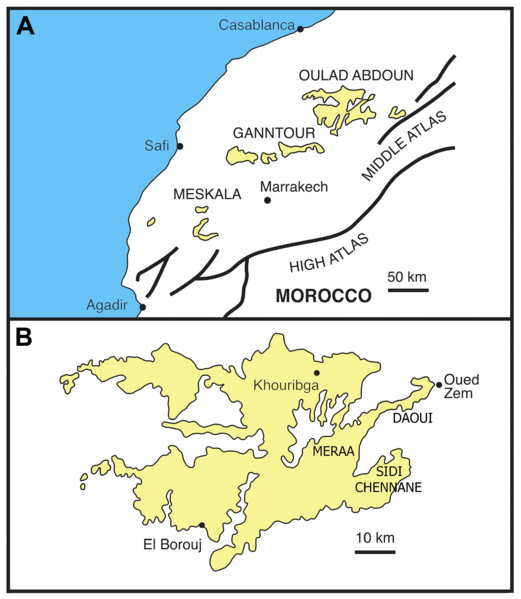|
Sandownidae
Sandownidae is a family of extinct marine turtles from the Cretaceous and Paleogene distributed around the Atlantic Ocean and adjacent areas. The family is defined as all taxa closer to the type genus '' Sandownia'' than to ''Pelomedusa'', '' Testudo'', ''Solnhofia'', ''Eurysternum'', ''Plesiochelys'', ''Thalassemys'' or '' Protostega'', a definition that encompasses the previous concept of the clade while also excluding it from being synonymous with other clades of modern or extinct marine turtles. Sandownidae may be within the larger clade Angolachelonia, defined as inclusive of ''Angolachelys'' and ''Solnhofia'', sister to the entirely Late Jurassic marine group Thalassochelydia, although the concepts of the clades may shift with further phylogenetic analysis. Genera * '' Sandownia'' Meylan et al. 2000 Atherfield Clay Formation, England, Early Cretaceous (Aptian) * '' Brachyopsemys'' Tong and Meylan 2013 Ouled Abdoun Basin, Morocco, Paleocene (Danian) * ''Angolachelys'' Mate ... [...More Info...] [...Related Items...] OR: [Wikipedia] [Google] [Baidu] |
Thalassochelydia
Thalassochelydia is a clade of extinct marine turtles from the Late Jurassic and earliest Cretaceous of Europe and South America. The group is defined as including ''Eurysternum'', ''Plesiochelys'' and ''Thalassemys'' to the exclusion of ''Pelomedusa'', '' Testudo'' and '' Protostega''. While a clade uniting the families Eurysternidae, Plesiochelyidae and Thalassemydidae had been supported by phylogenetic evidence, a name was not given for the clade until 2017, when Jérémy Anquetin and colleagues coined Thalassochelydia. While inner relationships of the clade are so uncertain as to make the monophyly of the families questionable, the significant diversity of thalassochelydians makes using the potentially invalid terms useful to describe the different morphologies. The monophyly of Thalassochelydia was further supported by a later analysis by Serjocha Evers and Roger Benson in 2019, where the group, represented by '' Solnhofia'' and Plesiochelyidae was sister taxon to Sandown ... [...More Info...] [...Related Items...] OR: [Wikipedia] [Google] [Baidu] |
Angolachelonia
Angolachelonia is a clade of extinct turtles from the Late Jurassic to Paleogene of Eurasia. The group is defined as all taxa derived from the ancestor of the type genus ''Angolachelys'' and '' Solnhofia'', a definition that could potentially encompass a clade of entirely marine turtles. Angolachelonia was originally inclusive of only ''Solnhofia'', ''Angolachelys'' and '' Sandownia'' when originally conceived by Octavio Mateus and colleagues in 2009, but later phylogenetic analyses by Serjocha Evers and Roger Benson in 2018 unites the family Sandownidae, including ''Angolachelys'' and ''Sandownia'' among other taxa, with the entirely Late Jurassic clade Thalassochelydia, where ''Solnhofia'' may be a basal member. While the placement of ''Solnhofia'' is weak and the clade that Angolachelonia represents may change with further analysis, the clade of Sandownidae and Thalassochelydia is well-supported, and does not collapse despite the uncertain evolutionary history of the group. T ... [...More Info...] [...Related Items...] OR: [Wikipedia] [Google] [Baidu] |
Leyvachelys
''Leyvachelys'' is an extinct genus of turtles in the family Sandownidae from the Early Cretaceous ( Late Aptian to Early Albian) of the present-day Altiplano Cundiboyacense, Eastern Ranges, Colombian Andes. The genus is known only from its type species, ''Leyvachelys cipadi'', described in 2015 by Colombian paleontologist Edwin Cadena. Fossils of ''Leyvachelys'' have been found in the fossiliferous Paja Formation, close to Villa de Leyva, Boyacá, after which the genus is named. The holotype specimen is the oldest and most complete sandownid turtle found to date. Fossils of a turtle found in the dinosaur-rich Glen Rose Formation of Texas, informally named ''Glenrosechelys brooksi'', have been assigned to the same genus and type species. Etymology The genus name is derived from Villa de Leyva and ''chelys'' means "turtle" in Greek. The species epithet ''cipadi'' refers to the CIP; the Centro de Investigaciones Paleontológicas, the paleontological research centre ou ... [...More Info...] [...Related Items...] OR: [Wikipedia] [Google] [Baidu] |
Atherfield Clay Formation
The Atherfield Clay Formation is a Geological formation in Southern England. Part of the Lower Greensand Group it dates to the Aptian age of the Early Cretaceous. The deposit is of marine origin largely consisting of massive yellowish brown to pale grey mudstones. The pterosaur ''Vectidraco ''Vectidraco'' (meaning "dragon from the Isle of Wight"), is a genus of azhdarchoid pterosaur from the Lower Cretaceous of England. Discovery and naming In November 2008, Daisy Morris of Whitwell, Isle of Wight, a four-year-old avid natural hi ...'' is known from the formation. As is the Sandownid turtle '' Sandownia.'' References Cretaceous England Geologic formations of England Geologic formations of the United Kingdom Mudstone formations Aptian Stage {{England-geo-stub Lower Cretaceous Series of Europe ... [...More Info...] [...Related Items...] OR: [Wikipedia] [Google] [Baidu] |
Angolachelys
''Angolachelys'' is an extinct genus of African eucryptodiran turtle which existed in Angola during the Turonian stage of the Late Cretaceous. The type species is ''Angolachelys mbaxi''. The type MGUAN-PA includes skull, jaw, and postcranial fragments found in the Tadi Beds of the Itombe Formation. Phylogeny Cladogram A cladogram (from Greek ''clados'' "branch" and ''gramma'' "character") is a diagram used in cladistics to show relations among organisms. A cladogram is not, however, an evolutionary tree because it does not show how ancestors are related to d ... after Mateus ''et al.'' (2009). References Cryptodira Prehistoric turtle genera Turonian life Late Cretaceous reptiles of Africa Fossil taxa described in 2009 {{paleo-turtle-stub ... [...More Info...] [...Related Items...] OR: [Wikipedia] [Google] [Baidu] |
Barremian
The Barremian is an age in the geologic timescale (or a chronostratigraphic stage) between 129.4 ± 1.5 Ma (million years ago) and 121.4 ± 1.0 Ma). It is a subdivision of the Early Cretaceous Epoch (or Lower Cretaceous Series). It is preceded by the Hauterivian and followed by the Aptian Stage.See Gradstein ''et al.'' (2004) or the online geowhen database (link below) Stratigraphic definitions The original type locality for the Barremian Stage is in the vicinity of the village of Barrême, Alpes-de-Haute-Provence, France. Henri Coquand defined the stage and named it in 1873. The base of the Barremian is determined by the first appearance of the ammonites ''Spitidiscus hugii'' and ''Spitidiscus vandeckii''. The end of the Barremian is determined by the geomagnetic reversal at the start of the M0r chronozone, which is biologically near the first appearance of the ammonite '' Paradeshayesites oglanlensis''. Regional equivalents The Barremian falls in the Gallic epoch, a su ... [...More Info...] [...Related Items...] OR: [Wikipedia] [Google] [Baidu] |
Paja Formation , a Bolivian musical group
{{disambig ...
Paja may refer to: * Paja, Iran, a village in Sari County * Paja (given name), a Serbian masculine name * Paja (surname) * Paja Formation, geologic formation in Colombia * Paja Brava :''Paja Brava is also used in Spanish speaking countries to refer to different types of grass'' Paja Brava is a Bolivian musical group. The band has had many different musicians that have participated over the years. The first recording was a sel ... [...More Info...] [...Related Items...] OR: [Wikipedia] [Google] [Baidu] |
Coniacian
The Coniacian is an age or stage in the geologic timescale. It is a subdivision of the Late Cretaceous Epoch or Upper Cretaceous Series and spans the time between 89.8 ± 1 Ma and 86.3 ± 0.7 Ma (million years ago). The Coniacian is preceded by the Turonian and followed by the Santonian. Stratigraphic definitions The Coniacian is named after the city of Cognac in the French region of Saintonge. It was first defined by French geologist Henri Coquand in 1857. The base of the Coniacian Stage is at the first appearance of the inoceramid bivalve species '' Cremnoceramus deformis erectus''. The official reference profile for the base (a GSSP) is located in Salzgitter-Salder, Lower Saxony, Germany. The top of the Coniacian (the base of the Santonian Stage) is defined by the appearance of the inoceramid bivalve ''Cladoceramus undulatoplicatus''. The Coniacian overlaps the regional Emscherian Stage of Germany, which is roughly coeval with the Coniacian and Santonian Stages. In magne ... [...More Info...] [...Related Items...] OR: [Wikipedia] [Google] [Baidu] |
Itombe Formation
The Itombe Formation is a geological formation of the Kwanza Basin in Angola dated to the Coniacian stage of the Late Cretaceous. The environment of deposition is shallow marine. Reptile fossils have been recovered from the Tadi beds locality within the formation, including the dinosaur ''Angolatitan'', the mosasaurs '' Angolasaurus'' and '' Mosasaurus iembeensis'' and the turtle ''Angolachelys''.The Itombe formation was formerly considered Turonian The Turonian is, in the ICS' geologic timescale, the second age in the Late Cretaceous Epoch, or a stage in the Upper Cretaceous Series. It spans the time between 93.9 ± 0.8 Ma and 89.8 ± 1 Ma (million years ago). The Turonian is preceded b ... in age, but new data suggests to be Coniacian. See also * List of fossiliferous stratigraphic units in Angola * Geology of Angola * Santos Formation References {{reflist Further reading * M. T. Antunes. 1964. O Neocretacio e o Cenozoico do litoral de Angola. Junta de Investi ... [...More Info...] [...Related Items...] OR: [Wikipedia] [Google] [Baidu] |
Danian
The Danian is the oldest age or lowest stage of the Paleocene Epoch or Series, of the Paleogene Period or System, and of the Cenozoic Era or Erathem. The beginning of the Danian (and the end of the preceding Maastrichtian) is at the Cretaceous–Paleogene extinction event . The age ended , being followed by the Selandian. Stratigraphic definitions The Danian was introduced in scientific literature by German-Swiss geologist Pierre Jean Édouard Desor in 1847 following a study of fossils found in France and Denmark.Danien He identified this stage in deposits from |
Paleocene
The Paleocene, ( ) or Palaeocene, is a geological epoch (geology), epoch that lasted from about 66 to 56 mya (unit), million years ago (mya). It is the first epoch of the Paleogene Period (geology), Period in the modern Cenozoic Era (geology), Era. The name is a combination of the Ancient Greek ''palaiós'' meaning "old" and the Eocene Epoch (which succeeds the Paleocene), translating to "the old part of the Eocene". The epoch is bracketed by two major events in Earth's history. The K–Pg extinction event, brought on by Chicxulub impact, an asteroid impact and possibly volcanism, marked the beginning of the Paleocene and killed off 75% of living species, most famously the non-avian dinosaurs. The end of the epoch was marked by the Paleocene–Eocene Thermal Maximum (PETM), which was a major climatic event wherein about 2,500–4,500 gigatons of carbon were released into the atmosphere and ocean systems, causing a spike in global temperatures and ocean acidification. In the Pal ... [...More Info...] [...Related Items...] OR: [Wikipedia] [Google] [Baidu] |
Ouled Abdoun Basin
The Oulad Abdoun Basin (also known as the Ouled Abdoun Basin or Khouribga Basin) is a phosphate sedimentary basin located in Morocco, near the city of Khouribga. It is the largest in Morocco, comprising 44% of Morocco's phosphate reserves, and at least 26.8 billion tons of phosphate. It is also known as an important site for vertebrate fossils, with deposits ranging from the Late Cretaceous (Cenomanian-Turonian) to the Eocene epoch (Ypresian), a period of about 25 million years. Geography The Oulad Abdoun is located west of the Atlas Mountains, near the city of Khouribga. The Oulad Abdoun phosphate deposits encompass some , an area of . The Oulad Abdoun is the largest and northernmost of Morocco's major phosphate basins, which from northeast to southwest, include the Ganntour, Meskala, and Oued Eddahab (Laayoune-Baa) basins. Paleobiota The Oulad Abdoun Basin stretches from late Cretaceous to the Eocene, and contains abundant marine vertebrate fossils, including sharks, bo ... [...More Info...] [...Related Items...] OR: [Wikipedia] [Google] [Baidu] |




